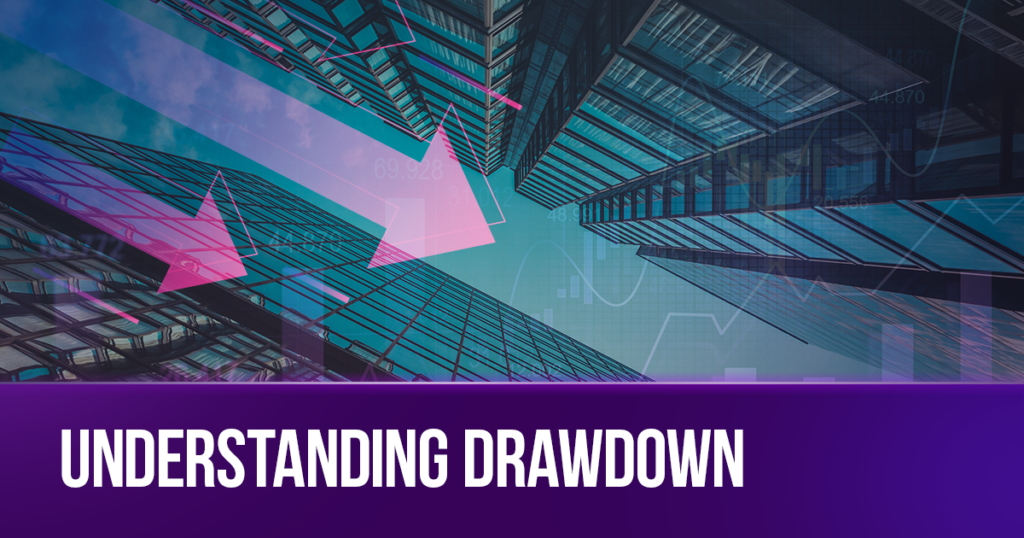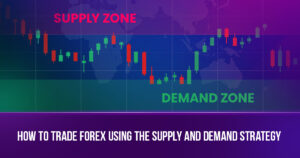Participating in a funded trader program is about more than just making and splitting profits. The prop firms also want to see that you obey the principles of risk management and that you can follow the rules. They want to know if they can entrust their money into your care and that you can responsibly grow their capital. They also want to know if you can avoid breaking the rules regarding how much you can lose within a particular time frame.
Whenever you sign up for the 2-step evaluation on TrueForexFunds, you are provided with a set of trade objectives you must achieve to move on to the next stage. One of the trade objectives has to do with the daily and overall drawdown. The trade objectives covering the drawdowns state that you must lose at most 5% of your capital daily or 10% of your capital. You may also call this the 5% maximum daily and 10% maximum total loss rules. This article will explain the drawdown and also show you how the drawdown works on the TrueForexFunds evaluation programs.
What is the Drawdown?
The drawdown is defined as the percentage reduction of your account capital due to trading losses. Drawdowns can result from the following:
- Failure to set a stop loss
- Extremely volatile market conditions that produce slippage
- Excessive position sizing
The drawdown is calculated as follows:
% drawdown = (loss/initial capital) X 100%
Assuming you have a $10,000 account and lose $1,000, or a trade position goes negative by $1,000, the % drawdown here = (1000/10000) X 100 = 10%.
The Drawdown: Key Points
You may have seen the terms “drawdown” and “loss” used interchangeably. They can mean the same thing when used within the context of the evaluations for funded trader programs.
- A drawdown is a scenario where an active trade position heads into negative territory and puts the position in a loss, even though this loss is unrealized. It is only when the position is closed out in negative territory that a drawdown is converted into a loss.
- Drawdowns tend to be measured in percentages of the account capital, and ideally, a good trading strategy should have a low drawdown level. A high drawdown level puts the account capital at risk. You will likely fail the evaluations if your trades have high drawdowns.
The reason prop firms have stringent drawdown limits is straightforward. A drawdown is a trade on its way to losing money, except something remarkable happens, and there is a reversal of fortunes. If a drawdown occurs on an account, the trader must achieve a return on investment that exceeds the drawdown to get the capital back to the breakeven point.
The formula used in calculating how much returns is needed to recover an account that has suffered a drawdown is listed below:
% ROI to breakeven point = (loss/current capital) X 100%
If you suffer a 10% drawdown, you would not need a 10% return on the investment to get back to the original point. Here is an illustration:
A 10% drawdown depletes a $10k account to $9k. To get the account back to $10k, the affected traders would need to make 11.1% to get the account back to the breakeven point, simply because they are now working with less capital and, therefore, less buying power than before. If the drawdowns get more extensive, it will require a much larger return on investment (ROI) just to recover to where the capital was before. | % Drawdown | % ROI Required to Recover to Breakeven |
| 10 | 11.1 |
| 20 | 25 |
| 30 | 42.86 |
| 40 | 66.7 |
| 50 | 100 |
You can see why True Forex Funds has set its drawdown/loss limits to the current values. This is to ensure that those who eventually make it to the funded trader stage can appreciate the difficulty that extensive drawdowns present in terms of capital preservation and take steps to avoid this.
If you have some trading experience, you will see that any good trade should only experience a little drawdown and quickly head into profit territory. This has even led to the development of a concept known as “sniper entries,” where a trade hardly experiences any drawdown before it heads into profit and concludes with the expected trade objective.
Now, is it realistic for all trades not to experience a drawdown? The answer is no. If you conform to acceptable risk management principles and commit only a little of your capital into a single trade, a drawdown of a position with proper position sizing that conforms to acceptable risk management principles will not violate the % loss rules set by True Forex Funds.
How are the 5% and 10% Drawdown Limits Calculated?
Unlike other firms, True Forex Funds calculates the 5% maximum daily loss from the starting equity on a new trading day. The only time you may suffer account closure before the 5% maximum daily loss limit is reached is if you are already in danger of hitting the 10% maximum total loss.
For instance, say you have a $10,000 account. Your maximum loss is 10% of this amount, which is $1,000. If you have already racked up losses of $950, your account capital has dropped to $9,050. However, you only need to go negative by $50 on an active position on this reduced account size before you breach the 10% maximum drawdown limit. In this instance, you do not need to even get to 5% daily drawdown before you breach the 10% drawdown limit, which will cause you to fail the evaluation.
Maximum Daily Loss resets at 0:00 CET. For a $10,000 account, the initial deposit is $10,000 and 5% of it is $500. If the trader generates profits in a single day, these profits are added to the $500 but only until 0:00 CET, when the Maximum Daily Loss resets to 5% of the initial deposit. That is why it is so important to know what the drawdown limits are and how to calculate them so you can avoid running foul of the rules.
If you have an overnight running position that incurs a drawdown of more than 5% from 0:00 CET, the Maximum Daily Loss limit will be violated. Even if the trade went to 6% unrealized profits before 0:00 CET, reversed and ended up with 1% profit after running overnight, the Max Daily Loss limit would stand violated because 6% – 1% is a 5% drawdown.
True Forex Funds calculates the 5% daily drawdown from your equity, not your account balance. The equity considers all floating profits, losses, commissions, swaps, and spreads. If you have been making profits, it increases the amount of money you would have to lose to breach the drawdown limits, thus giving you an additional cushion. It is usually more beneficial to leave positions that are slightly negative overnight to give them a chance to recover, especially as the 5% Maximum Drawdown limit will reset itself at 0:00 CET. So if you have an overnight trade running at -3% heading into 0:00 CET, the Max Daily Loss limit resets to 5% once more and allows any floating losses room for recovery the following day.
If you have a $50,000 account, your 5% daily drawdown/loss limit is $2,500. If your position is -3% (i.e. - $1,500) before 0.00 CET, you technically can only lose an additional 2% to be in violation of the Max Daily Loss limit. However, if this position runs overnight and hits 0.00 CET with a 3% drawdown, this is reset. You will then have to lose $2,500 the next day to breach the Max Daily Loss cap. The reset is done afresh every 24 hours at 0.00 CET, giving you a protective buffer to allow your positions recover the next day. The 24-hour reset can also work to your advantage if you lose money but still need to violate the drawdown limits. So in using a $50,000 account size as an example, the 5% daily drawdown on this amount remains $2,500.
If you lose $2,000 out of a $50,000 account size on a given day, you are not violating the daily drawdown limit, but you will only have a $500 cushion before the violation occurs. At 0.00 CET, the Max Daily Loss limit will reset back to $2,500. If you see yourself approaching the daily drawdown limit, you can take a break and allow your limits to reset to the default amount. However, you would also be closer to the total loss limit of 10% ($5,000) than before, and you will only have a $3,000 cushion before you hit this. However, your daily drawdown limit will reset. Please note that the 10% total loss limit or drawdown cap does not reset…it is calculated for the entire trading period and not daily.
How to Approach Your Evaluation Challenge With Proper Risk Management
Think of yourself as a boxer or a martial artist in the ring with a dangerous opponent. If you have watched any such matches, you will notice that combatants sometimes like to feel themselves out in the first two or three rounds before going at it. This is normal. In the financial markets, it is a good idea to feel the markets out, especially when events happening on a global scale could produce dangerous slippage and highly volatile market conditions.
How do you feel out the market? You do this by lowering your risk when taking trades. You lower your risk when your trade size is small enough to ensure that a losing performance on a trade does not create irrecoverable damage. Several successful prop firm traders, including those taking the True Forex Funds evaluations, usually kick off by taking very small risk in the first set of trades. Some of these take risks as small as trading mini-lot sizes even with accounts as large as $200k. The principal goal of trading with a prop firm is to keep your risks low. Making a profit is the next objective.
You have 30 calendar days to pass the first phase of True Forex Funds’ evaluation. A pass requires you to make 8% profit without hitting the 5% daily loss or 10% all-time loss limits. If you are trading a $100k account, 8% equals $8k in profit without losing $5,000 in a trading day or $10,000 in total.
Conclusion
The key to surviving in financial trading is not some so-called “fail-proof” or “100% win” strategy. Understanding drawdowns, knowing how to apply risk management to stay within the safe drawdown zone, and building on it to succeed in the evaluations and the funded trader stage.
The total loss limit at True Forex Funds is 10% for all types of accounts.




